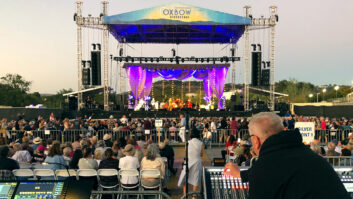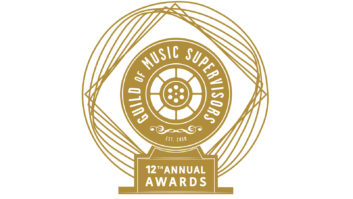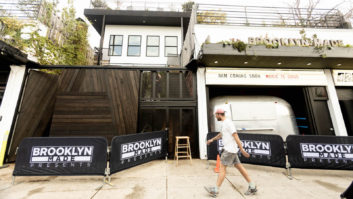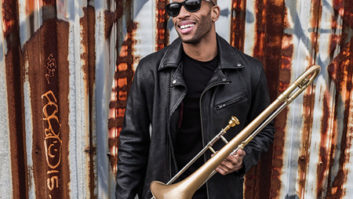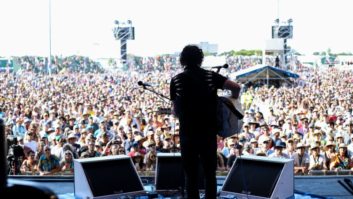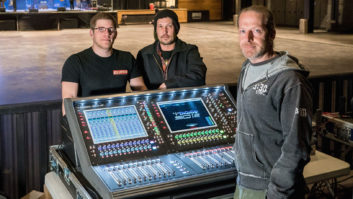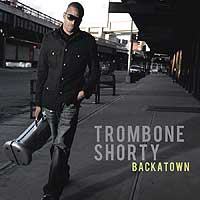
Troy “Trombone Shorty” Andrews opens his album Backatown with the original instrumental “Hurricane Season”: It’s a wild ride as lines blur between up-tempo jazz, funk, R&B. This record has all the full joy of a big jazz-band recording, but with funk and hip-hop beats, and electric guitars. It’s also the first solo release from Trombone Shorty, and the first solo production credit for Ben Ellman, whose main gig is playing sax and harmonica in jazz/funk/fusion band Galactic. He and his bandmates have a project studio, Number C, and that’s where Backatown was recorded.
“We had a spot before [Hurricane] Katrina that lost its roof and the building had to be torn down,” Ellman says. “We found this spot after that, and it was already built out as a studio. It had a drop ceiling, a separate control room, a nice big recording room and a few smaller iso rooms, as well as other spaces like staircases and bathrooms that sound good if you put a mic in them.”
Ellman says he and Andrews first brought Andrews’ touring band into the studio and recorded a few dozen songs: “The drums were in the main room, and we have a couple of iso rooms where I keep the amps—the bass is direct and the guitar amp is isolated—and Troy was up in the control room [which overlooks the tracking room], doing either a scratch trumpet take or a vocal take. Then we picked the best songs we wanted to work on.”
Ellman and Andrews then began experimenting with arrangements, developing all of the tracks, part by part, and re-recording individual bandmembers to Pro Tools LE to build the final tracks.
“The process I like to use—and I do the same with Galactic—is to build [tracks] and layer them in Pro Tools, and that became a lot of the writing process,” Ellman says. “Then we would, for example, have his drummer replay stuff so it would have a more organic feel, and his guitar player, of course. Some things we didn’t necessarily want a super-organic feel, and other things we definitely did.”
The centerpiece of the album is Andrews and the horn section. Ellman explains his horn-miking technique: “If it’s just Troy, we have an [AKG] C12 mic that I would put on him in the middle of our room. When his horn section would come in, I would set up sort of a ‘T’ with our gobos, and have them all in the same room playing together. In those cases, a close mic [on each player] and some [Schoeps condensers] overhead is what I’m usually going for so we have closeness and we have some room sound that we could dial in if we need more of that.”
The album was mixed by the engineer known simply as Count, whose San Francisco–based studio is called Studio Chocula. Ellman, who still considers himself more a musician than a technical producer, says, “It was a very beautiful and comforting safety net that I had a really great mixer behind me.”
